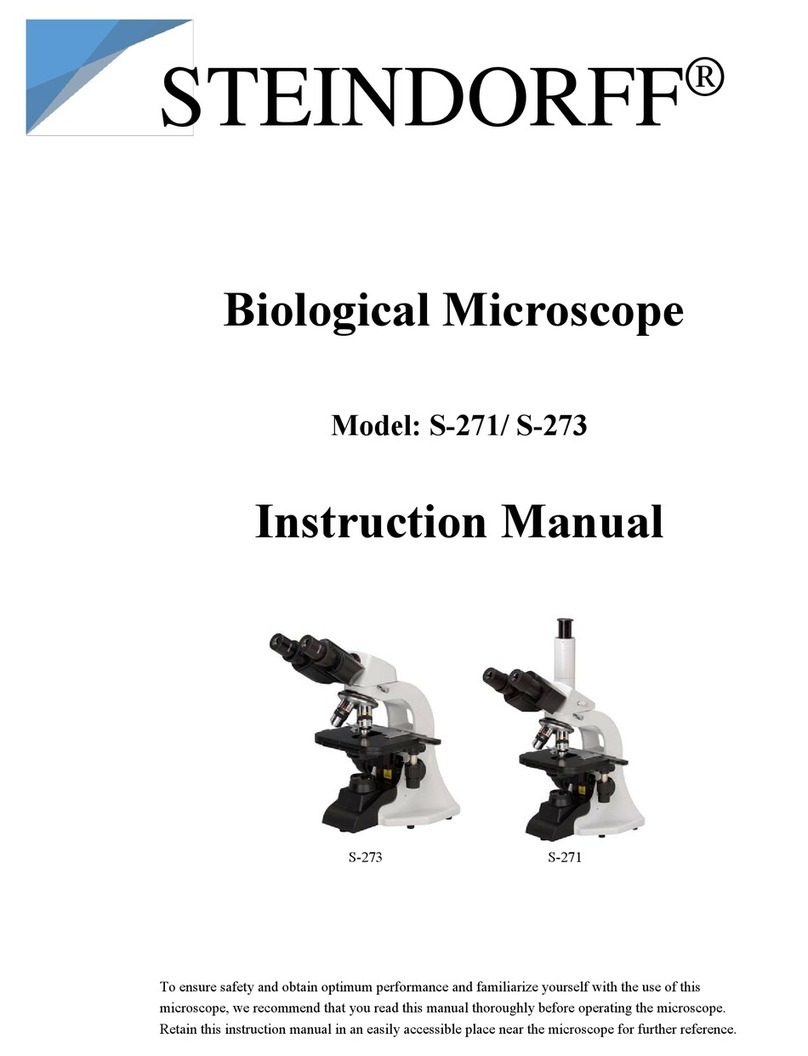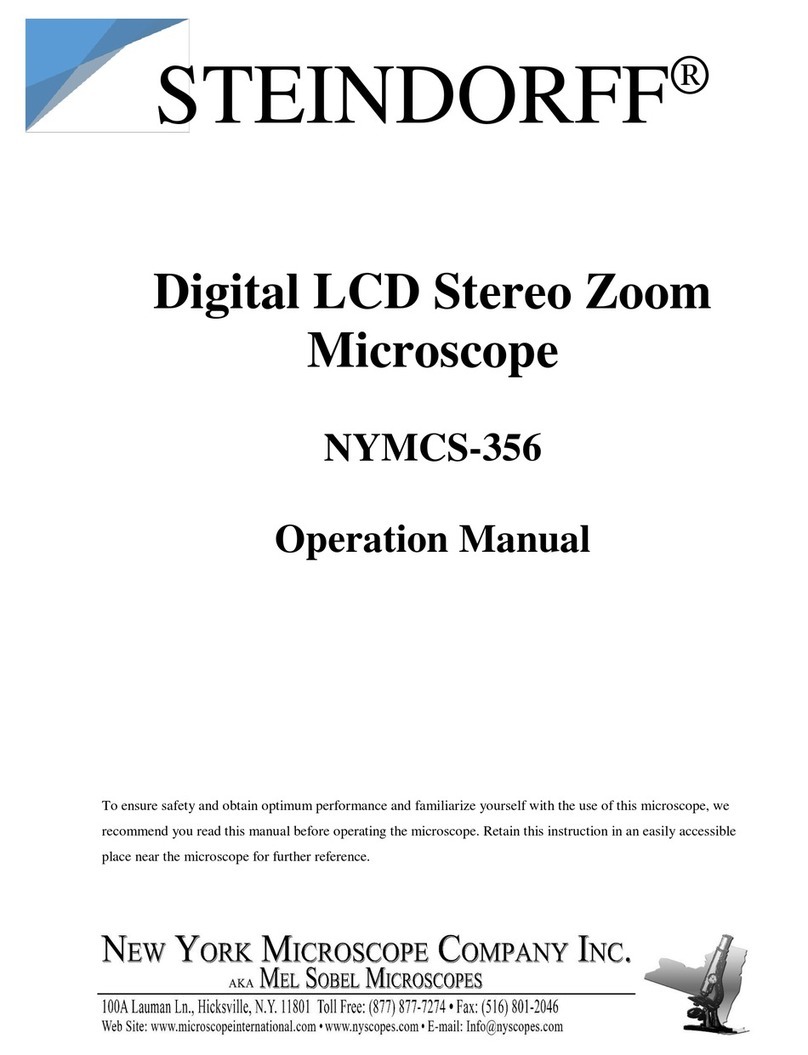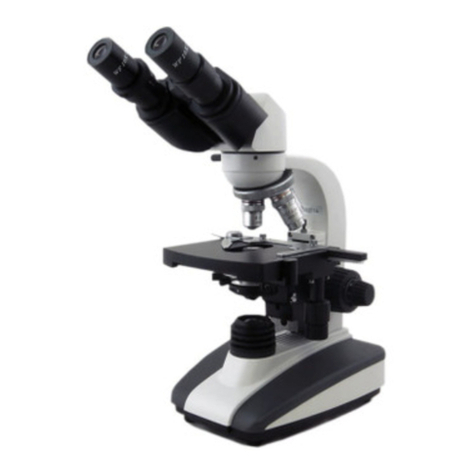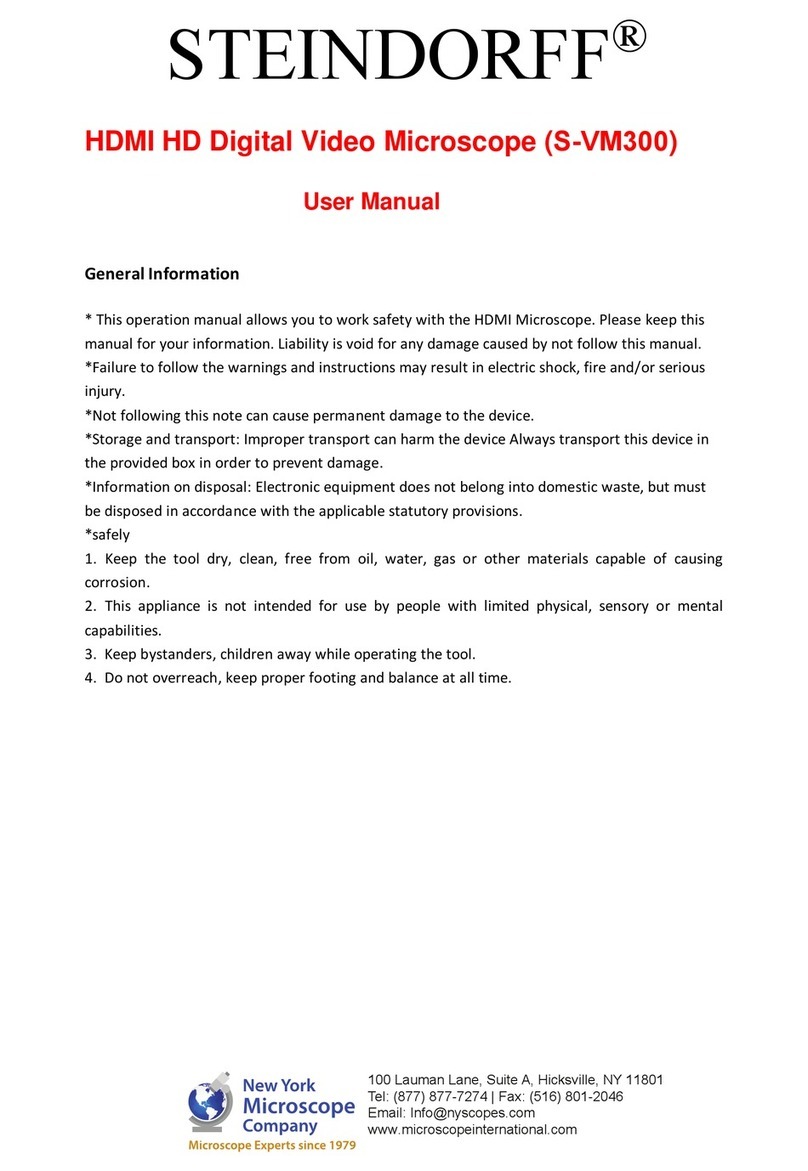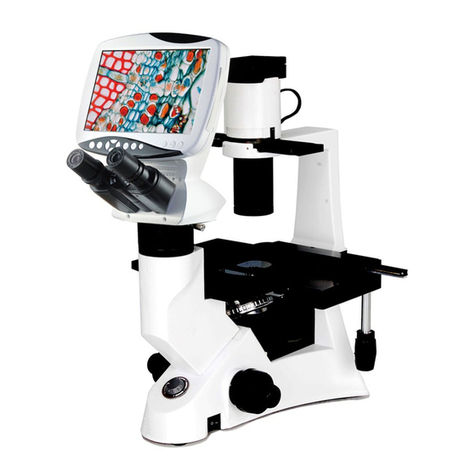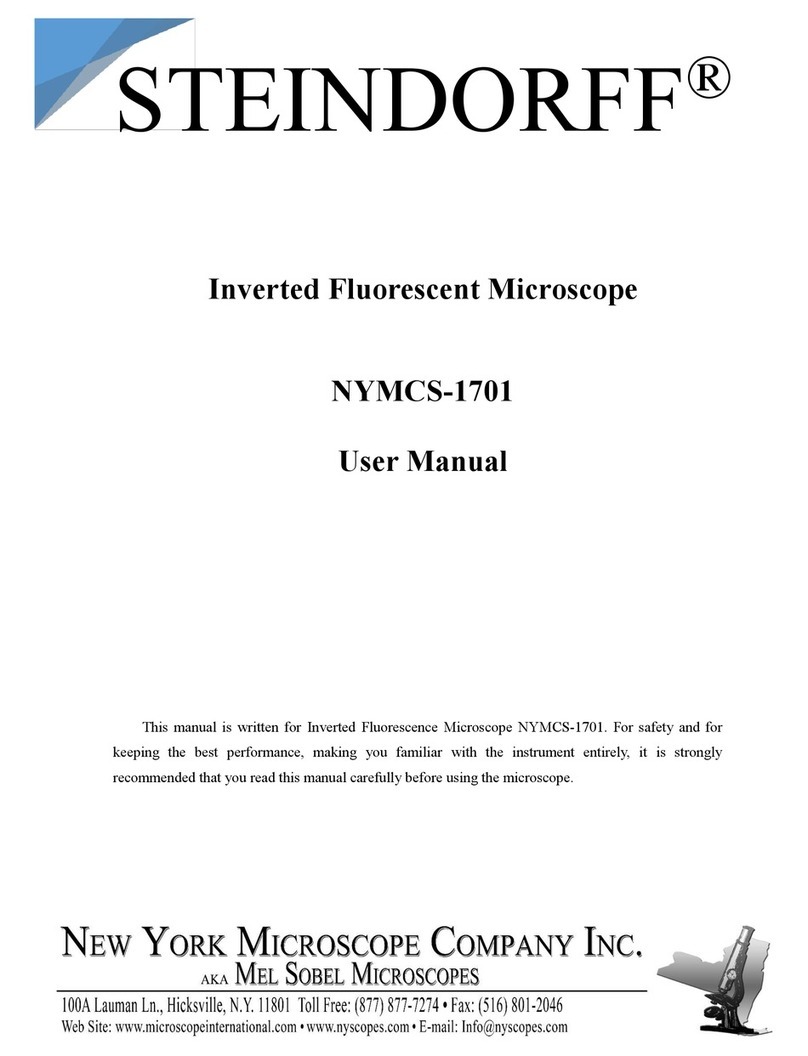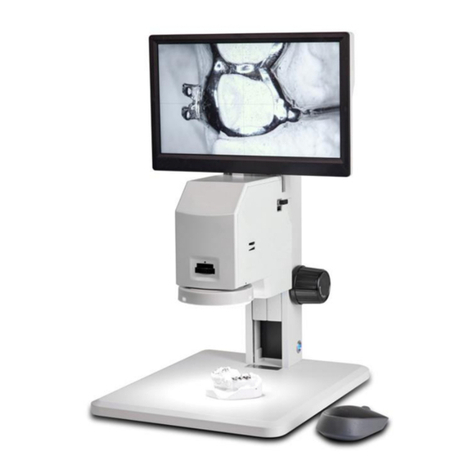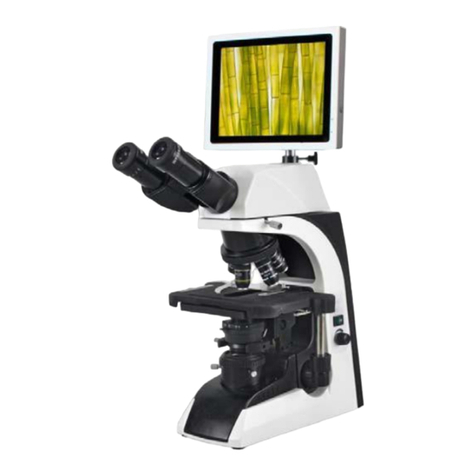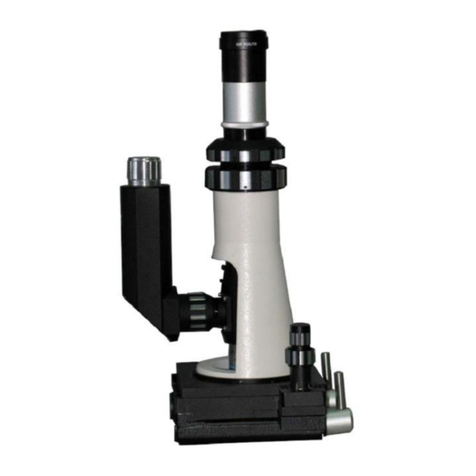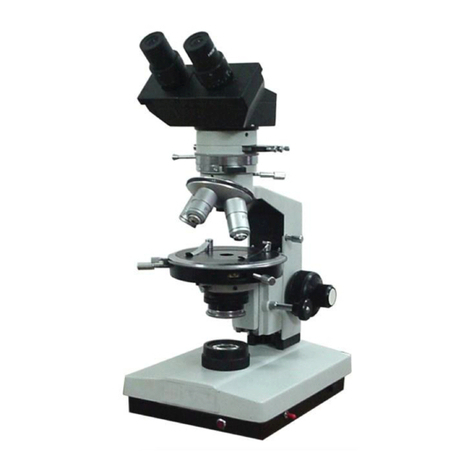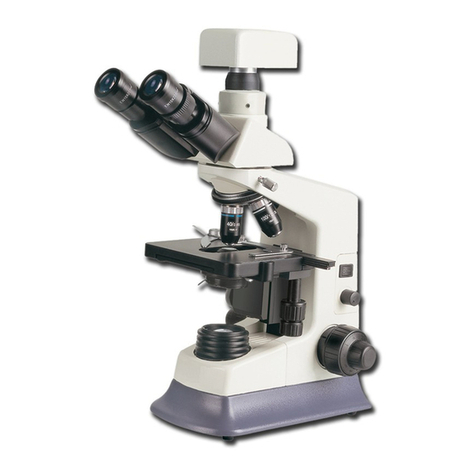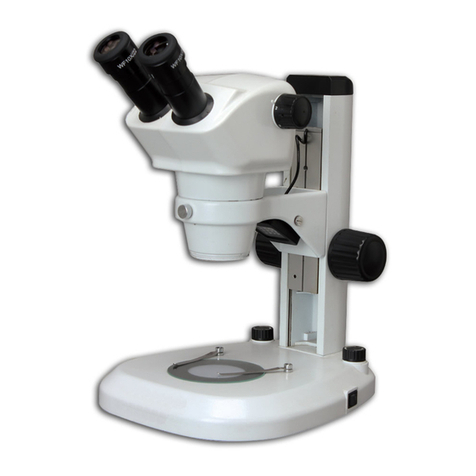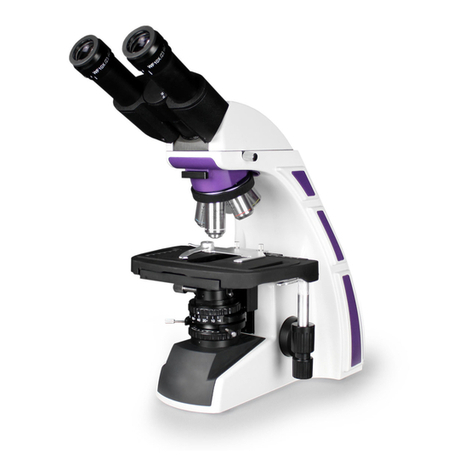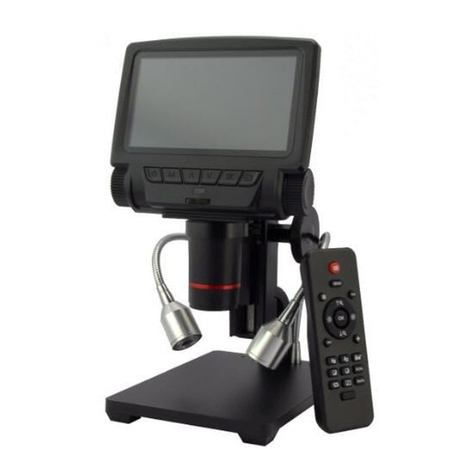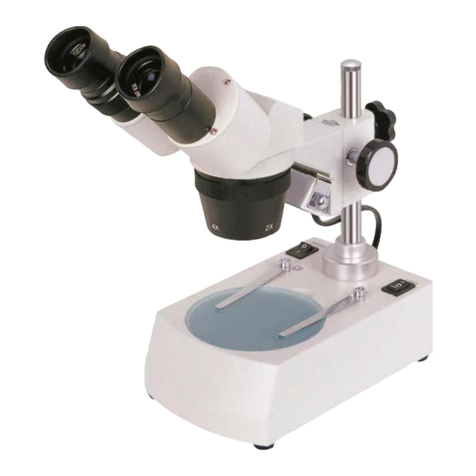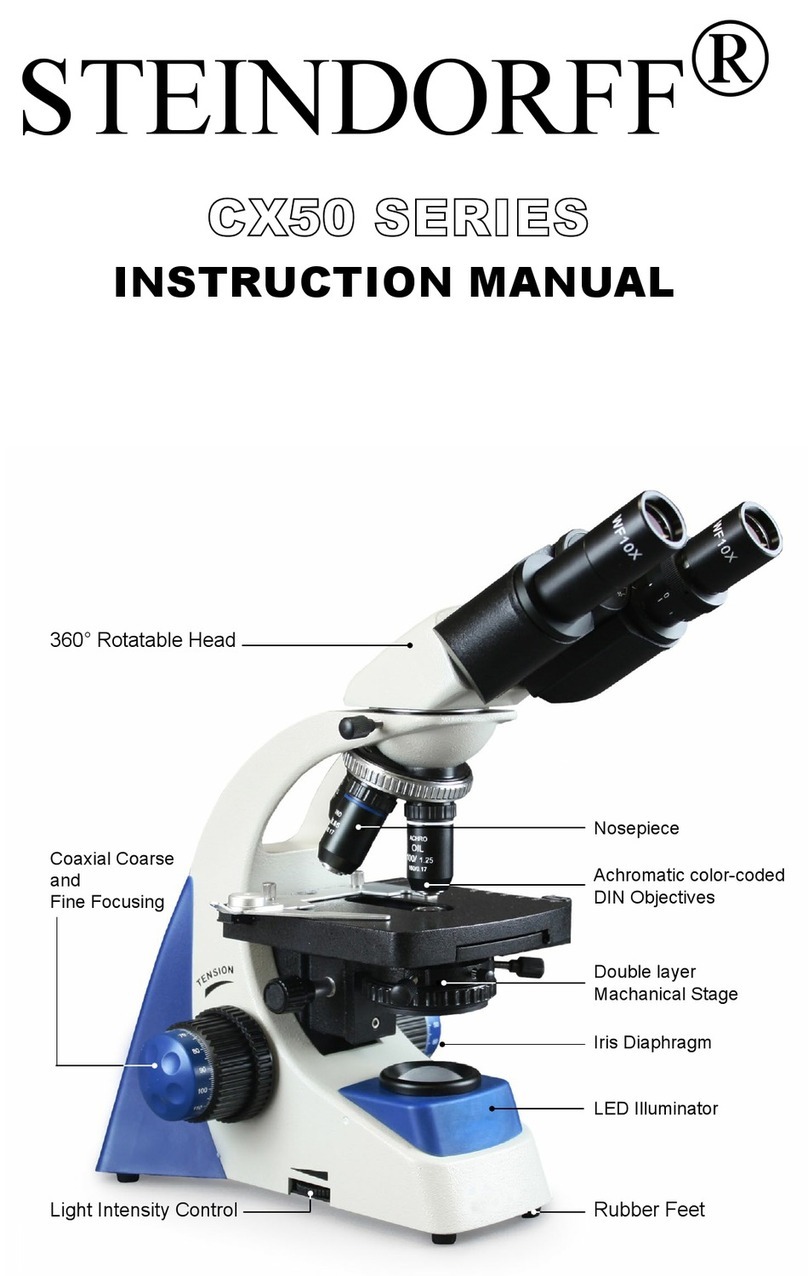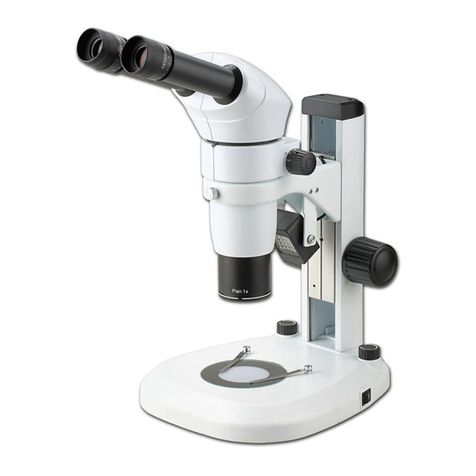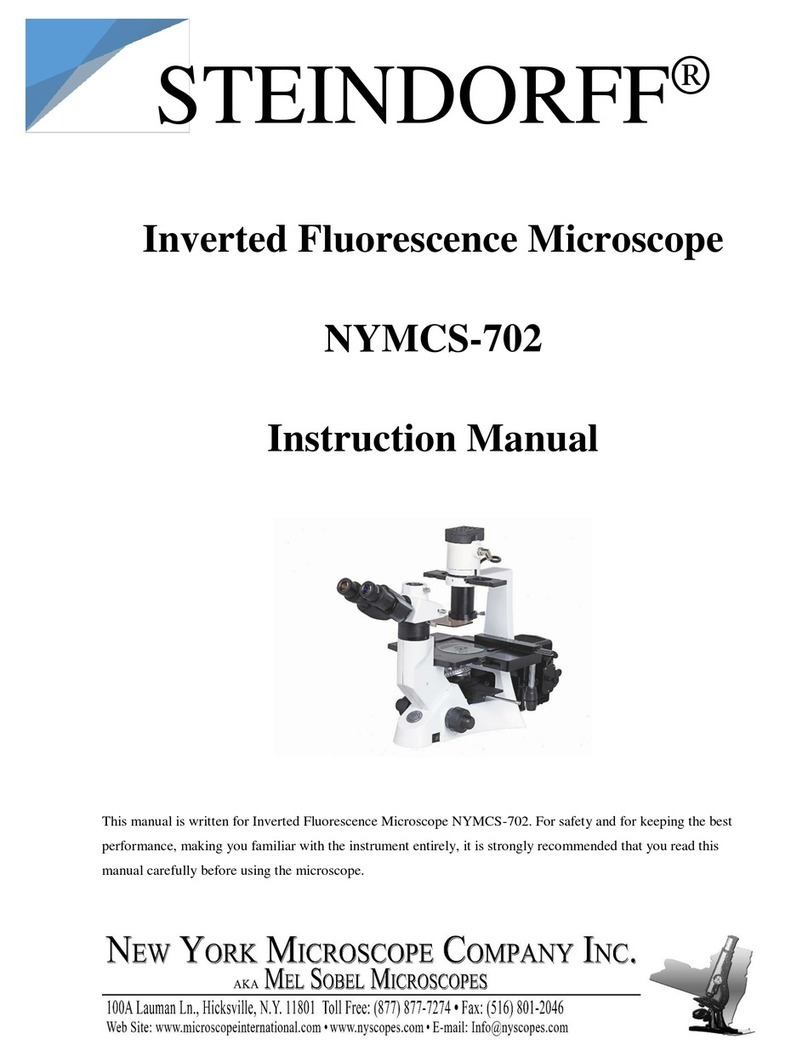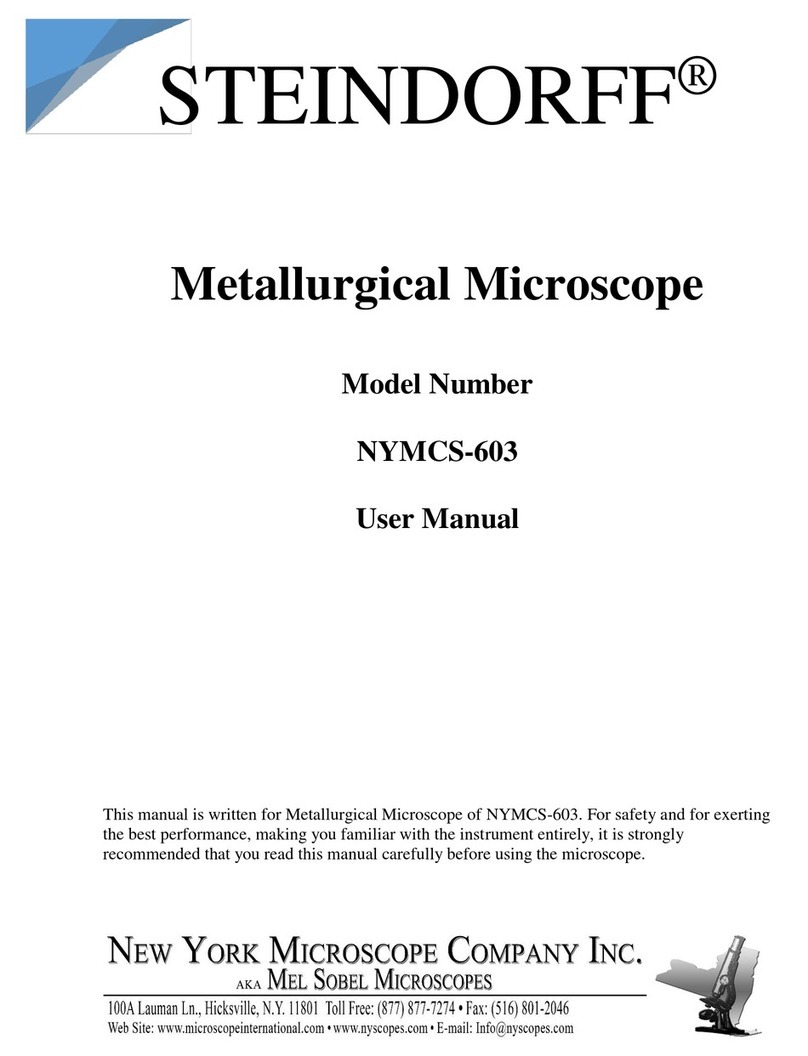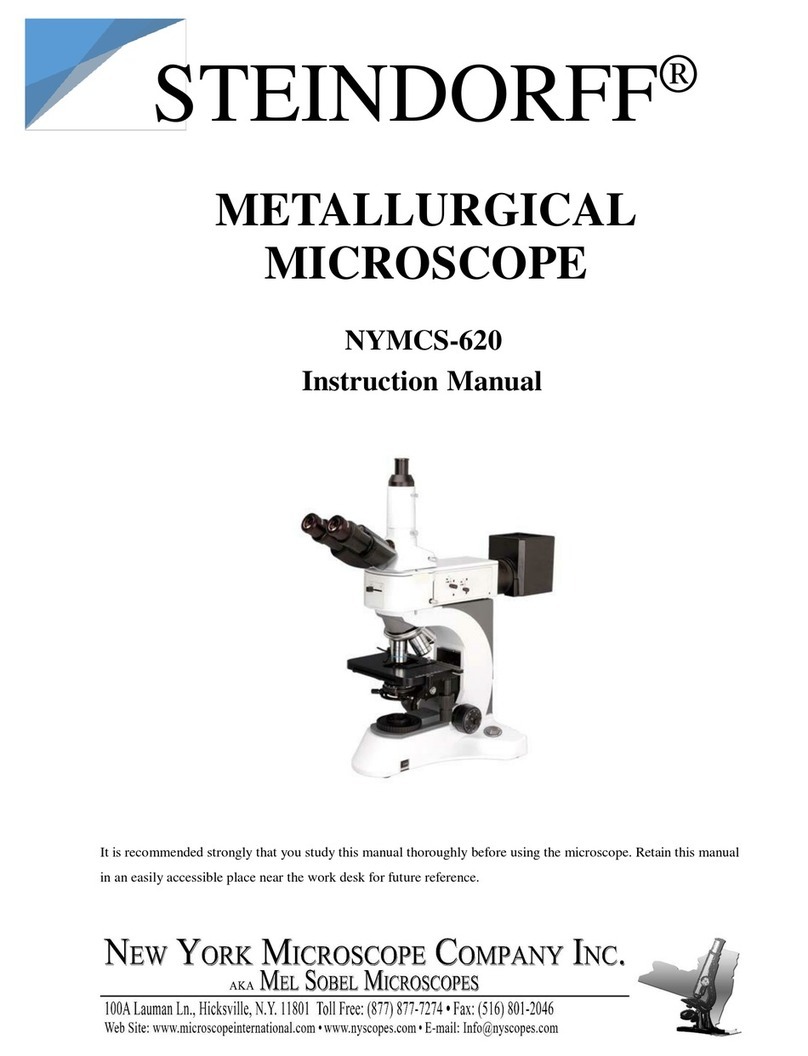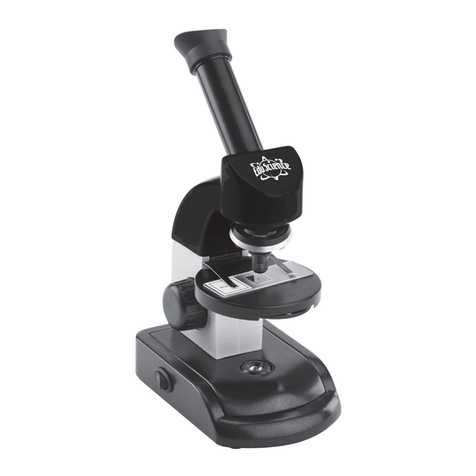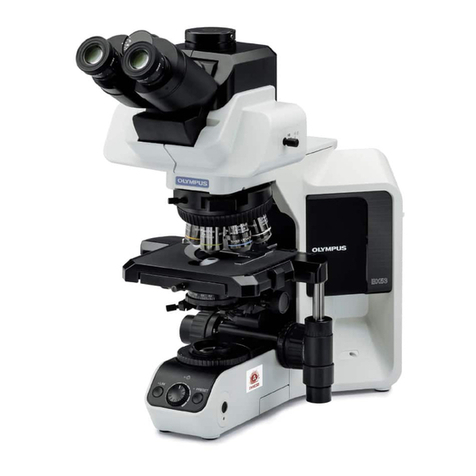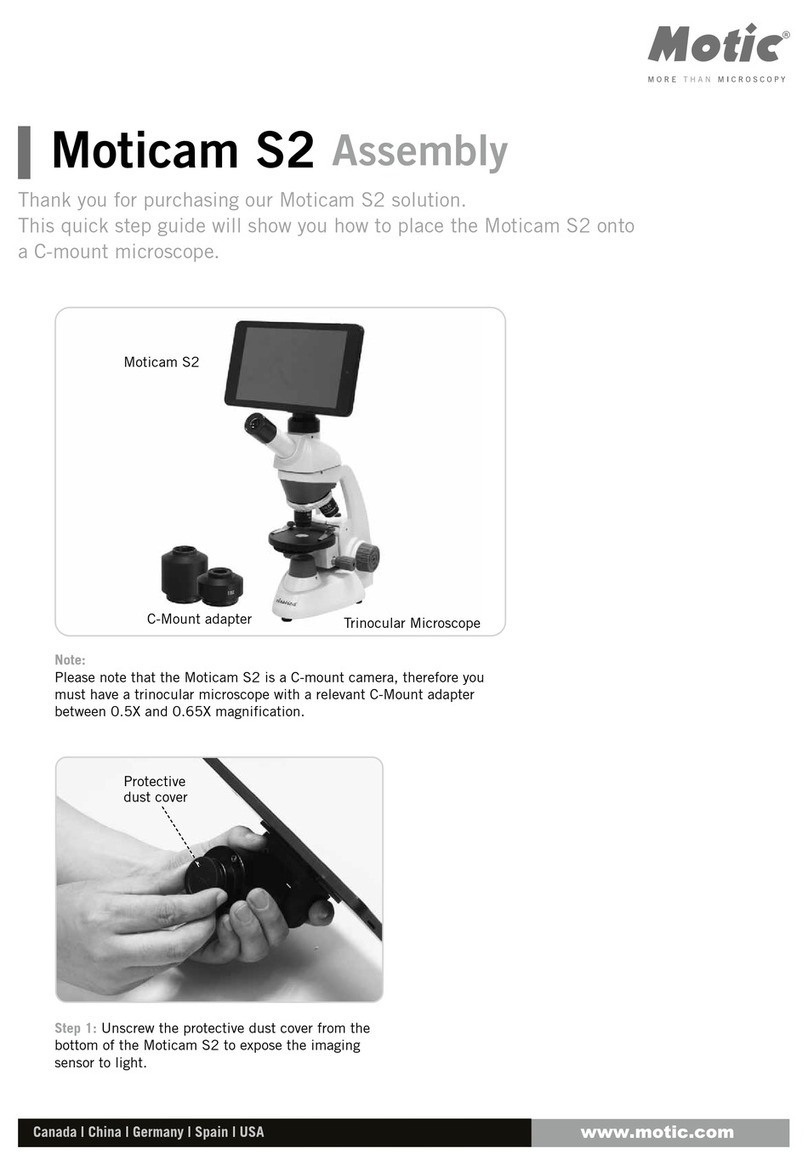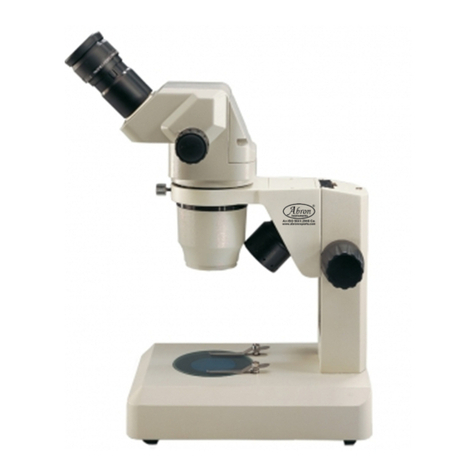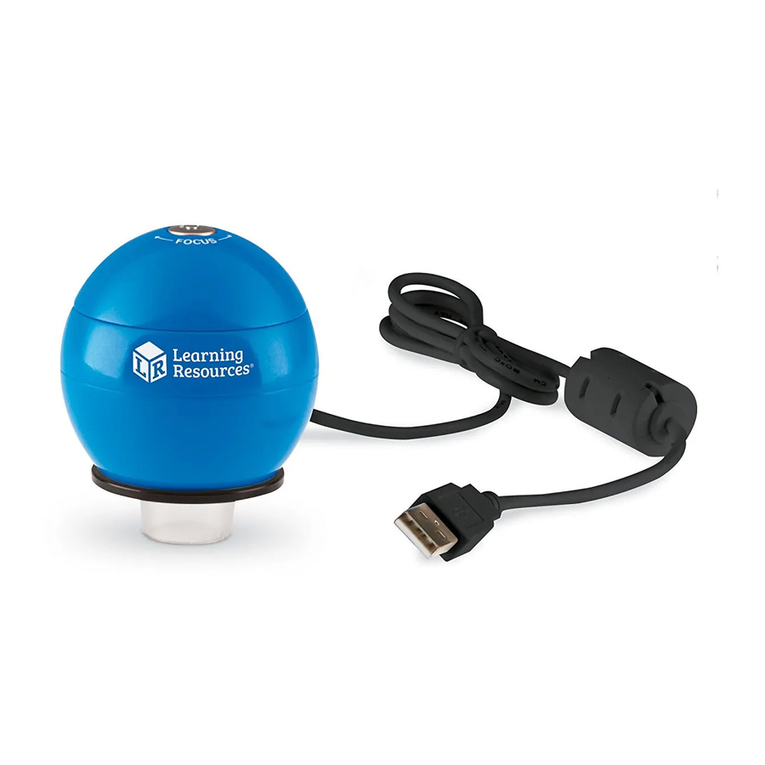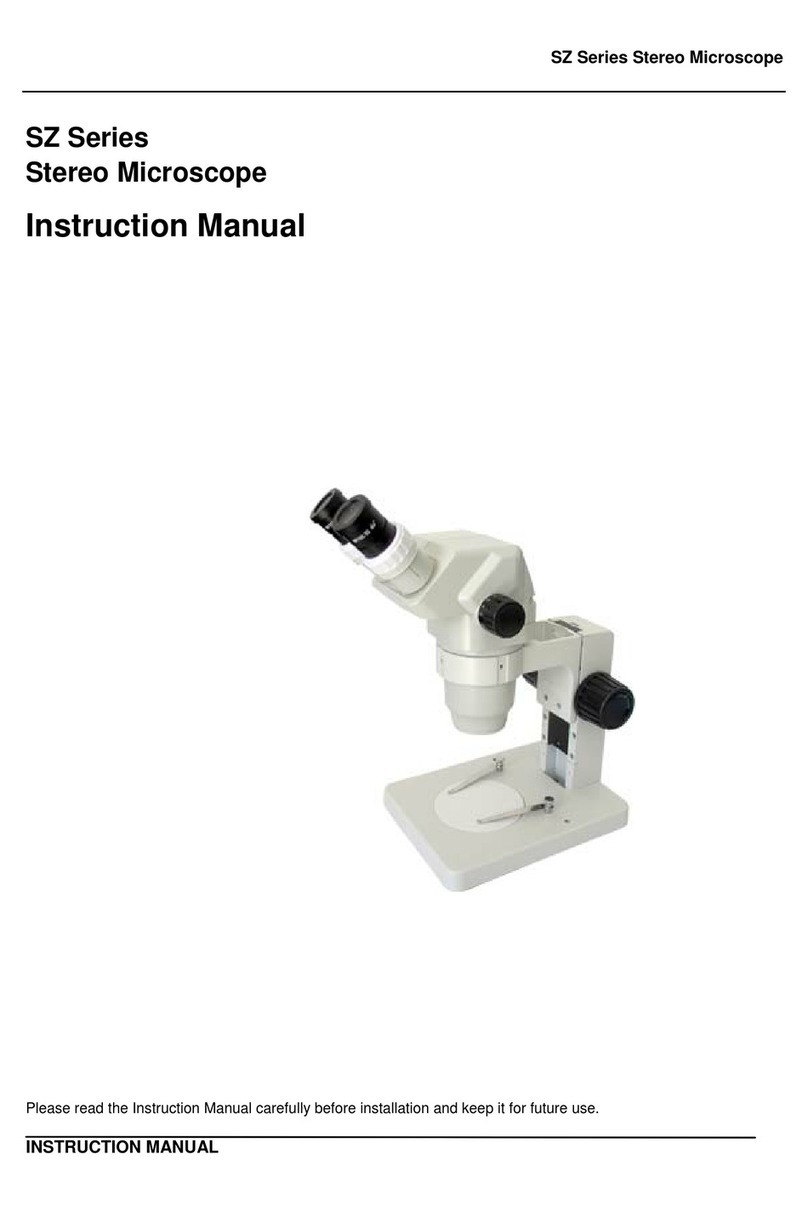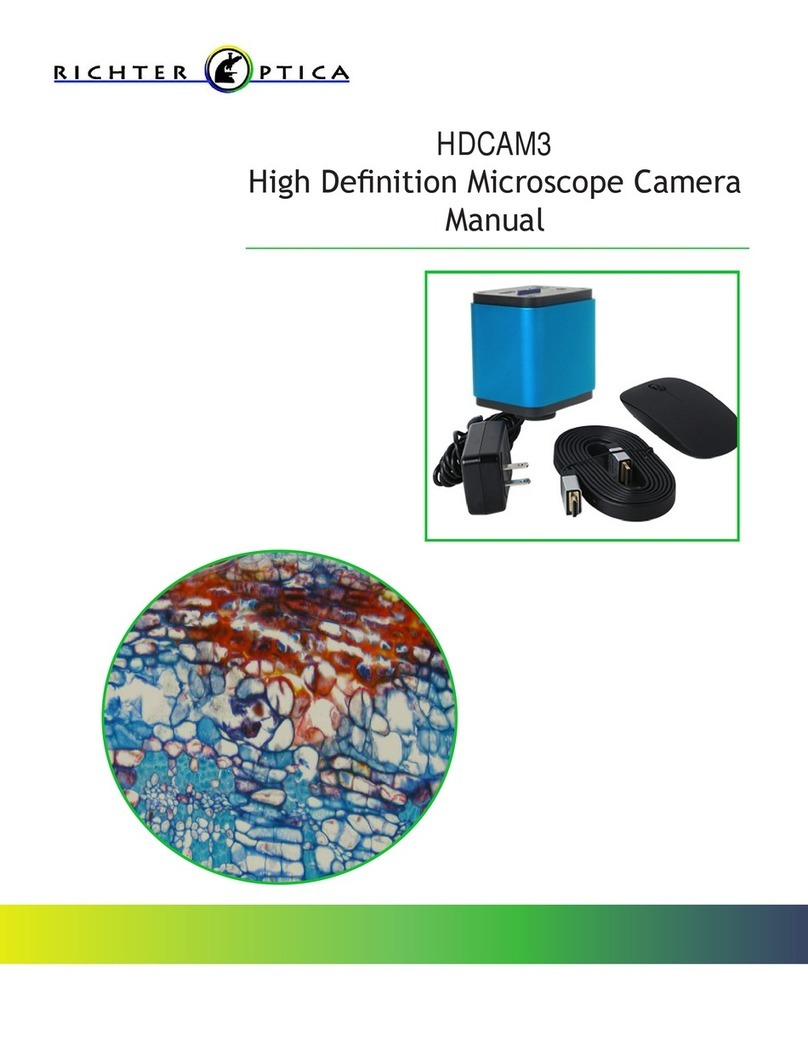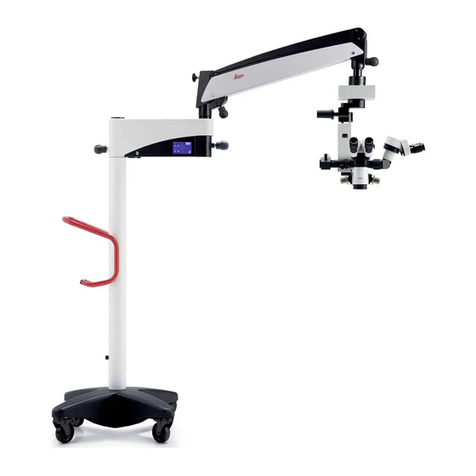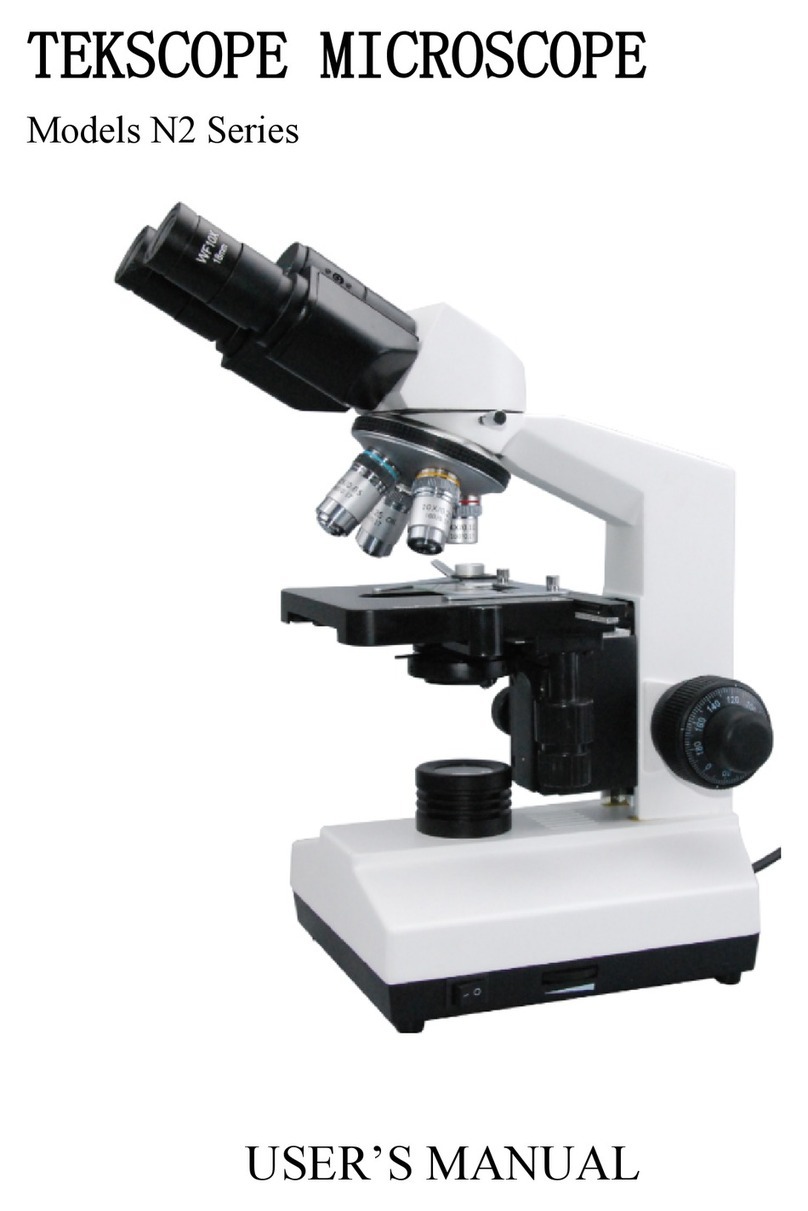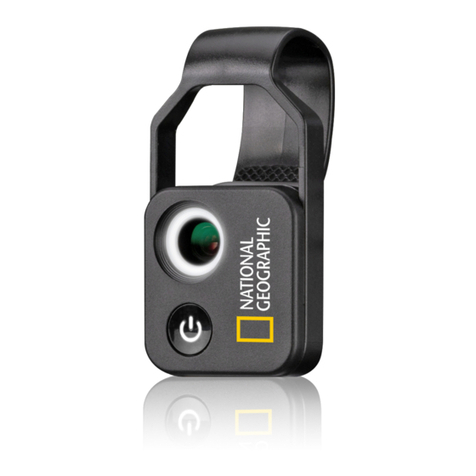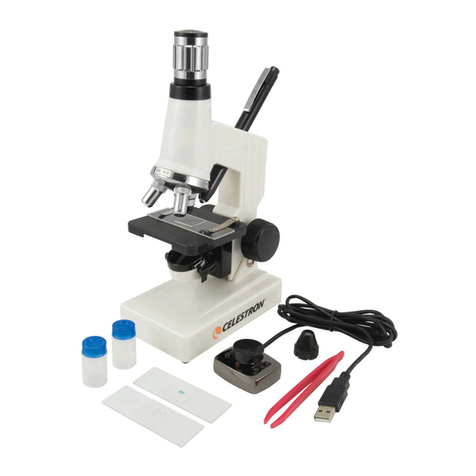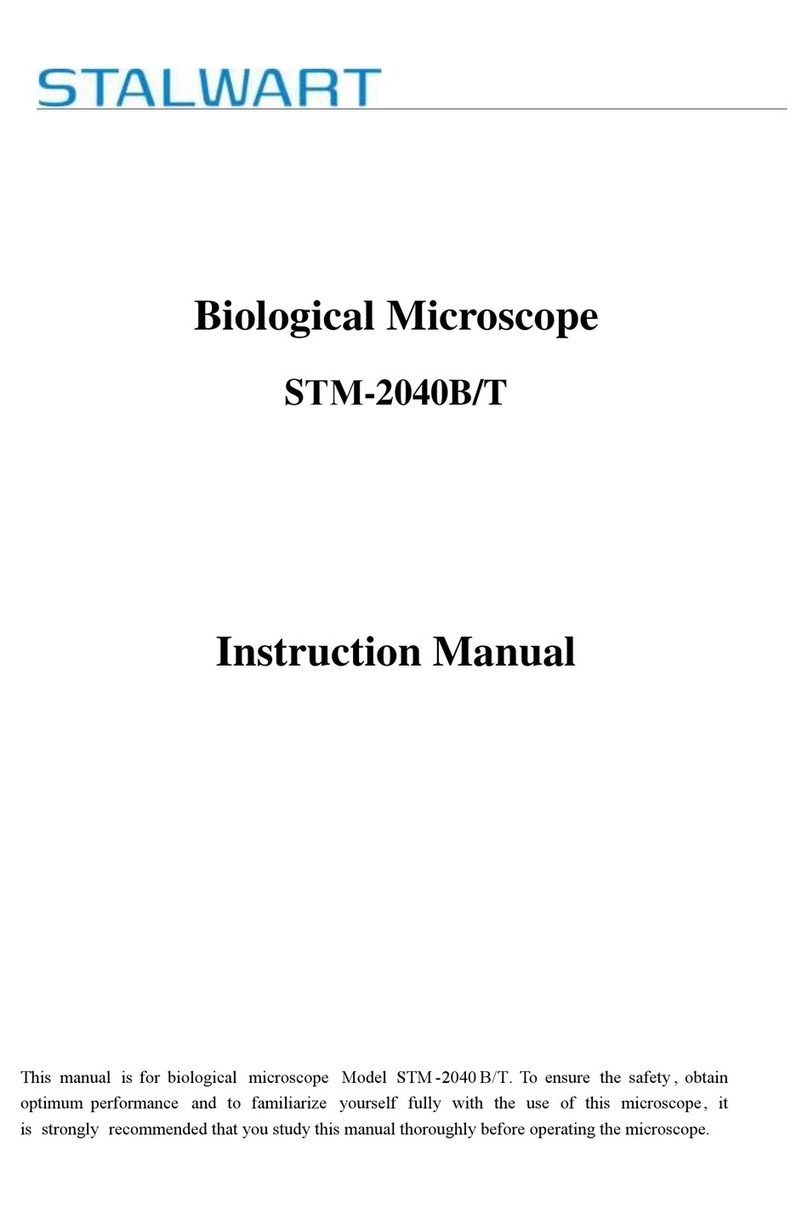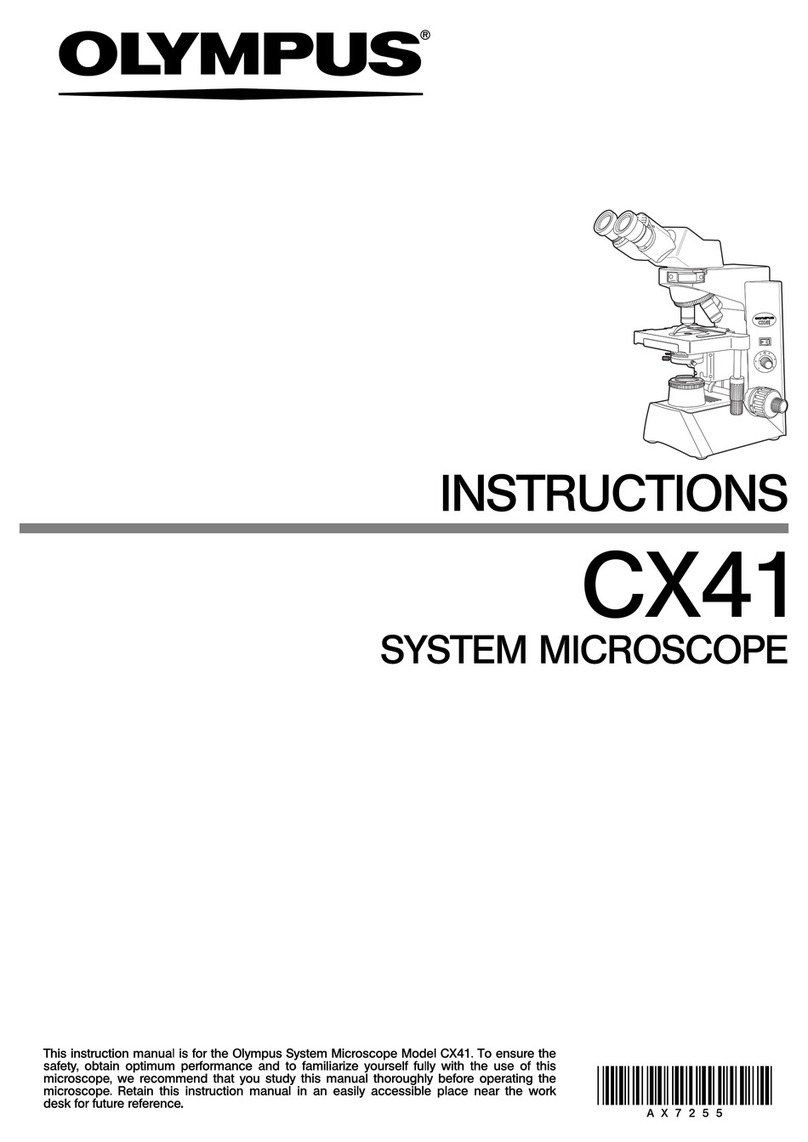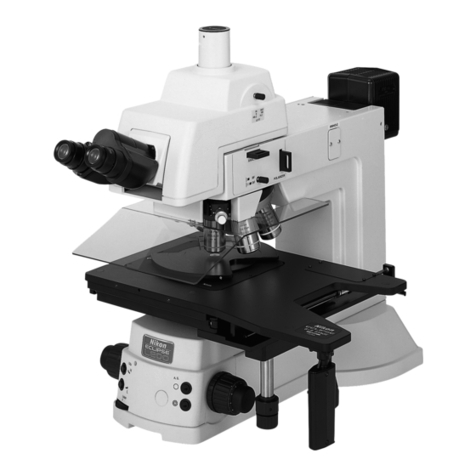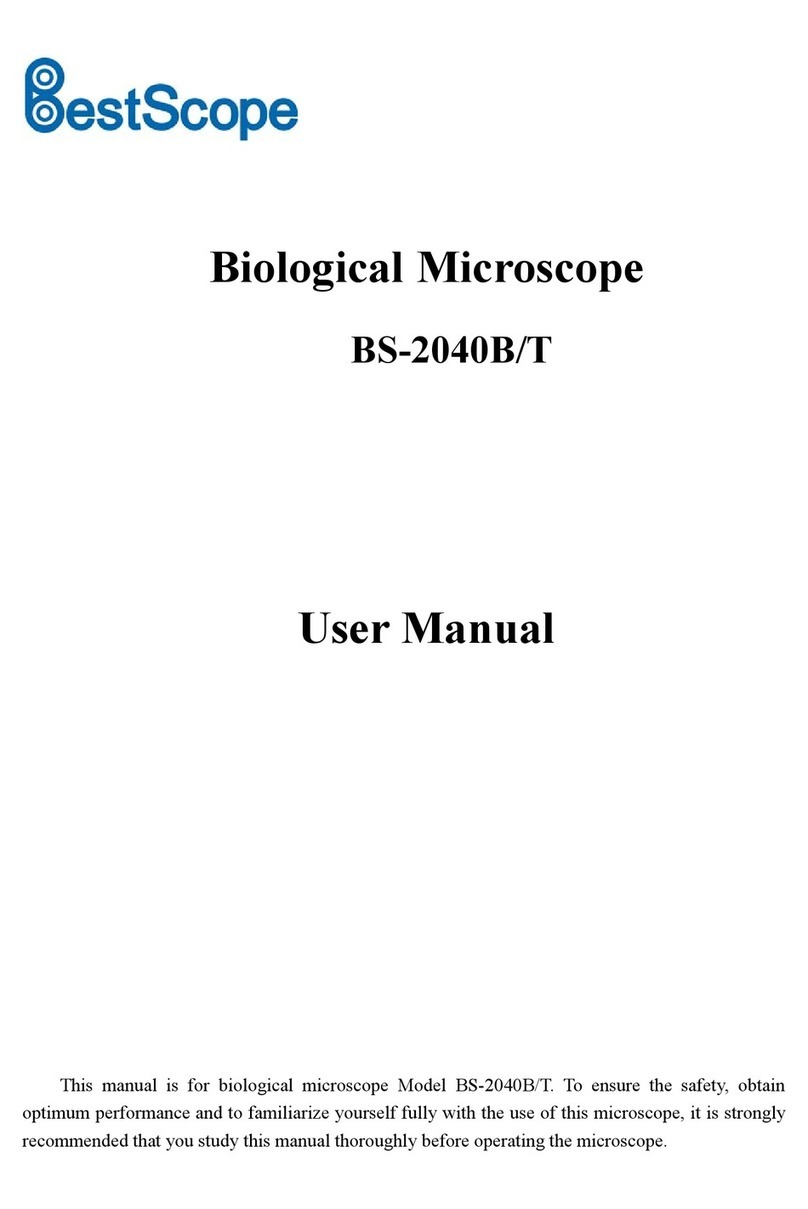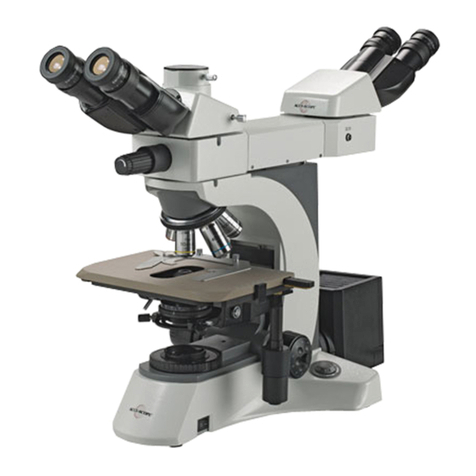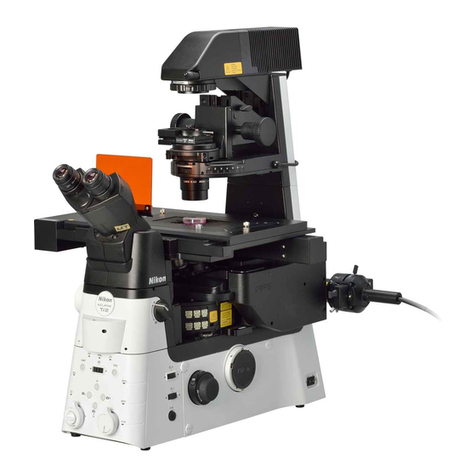
STEINDORFF®
2. Illumination system:
In order to make observed specimen have enough brightness and make the resolving power
of the objectives be used fully, this instrument adopt 6v20w built-in brightness variable
lamp. It composed with condenser and iris diaphragm, turning the iris of the condenser and
making the aperture of condenser suitable for the aperture of objective, the condenser is
composed of two parts. One is installed on trestle. This trestle can move up and down by
rack and gear. The light axis of the condenser must coincide with the light axis of this
instrument. When it diverge, adjust three screws in the trestle of the condenser. The other
is installed on the mounting.
3. Stage and shifter:
Stage is installed on stage rack. It can move up and down and is perpendicular to optical
axis .the shifter can make the specimen move transversely and longitudinally.
4. Eyepiece, objective and nosepiece;
The microscope imaging system is composed of eyepiece and objective according to their
magnifications. Rotate the objectives into the threaded holes of the nosepiece. So that when
turning the nosepiece. You can change the objectives and get the needed magnification
swiftly. The nosepiece adopts precise and advanced structure .when changing the
objectives, the center area of the field view always locates within the range of observing
and satisfies the focusing requirement.
Three persons observe in the same time, two monocular heads and one binocular can rotate
3600, in the field view, the center of the image is coincident. This is guaranteed by the
instrument, so that the operator do not adjust by themselves. The eyepiece tube is inclined
450, so it observed comfortable and convenient.
5. Coarse and fine focusing equipment
This instrument adopts coaxial coarse and fine focusing equipment. The knobs are located
below the stage. So it is easy to operate coarse focusing range is 30mm. Fine focusing
range is 30mm too. There is knob beside each coarse focusing knob. One is used as
tightness adjustment for coarse focusing knob. The other is used as coarse focusing stopper.
When you lower the stage and raise it again the stage is at the same level. When you do
not the location, you can turn the flange of the stopper and loose it.
D. Usage:
1. Rotate the objectives in sequence, according to their magnification, into the 4 thread of the
nosepiece. Insert the eyepiece into the inclined eyepiece tube.
2. Put the specimen on the stage. Adjust shifter and make the specimen in the center of the
hole of the stage.
3. First use objective 10x, turn the coarse focusing knob and make the objective near specimen
and then observe the image through eyepiece and turn the coarse focusing knob down until
you can see the specimen image. After that turn the fine focusing knob until you get a sharp
